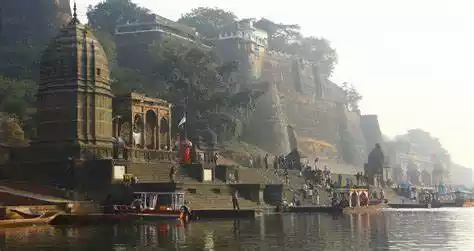Discovering the Rich Tapestry of Dewas District
Introduction
Dewas, a district in the heart of Madhya Pradesh, India, is a place where history, culture, and nature intertwine. This vibrant region offers a unique blend of ancient traditions and modern growth, making it a fascinating destination for anyone interested in the multifaceted beauty of India.
Demography
Dewas district boasts a diverse demographic profile. The population includes a mix of ethnic groups such as the Malwa, Bhil, and other tribal communities, along with mainstream Hindu, Muslim, and Jain populations. This melting pot of cultures is reflected in the district's festivals, languages, and everyday social interactions.
Culture
The cultural fabric of Dewas is rich and varied, deeply rooted in its historical and social contexts. Traditional music and dance forms, such as the Malwi folk songs and the energetic Bhil dances, are integral to local celebrations. Artisans in Dewas are renowned for their handicrafts, particularly the intricate woodwork and pottery that are both utilitarian and decorative.
Festivals and Traditions
Festivals like Diwali, Holi, Eid, and the local Bhagoria Haat (a festival of the Bhil tribe) are celebrated with great fervor. Each festival showcases the district's cultural diversity and brings together communities in joyous celebrations.
Geography and Topography
Dewas district is part of the Malwa plateau, characterized by its undulating hills, fertile plains, and scenic landscapes. The region is nourished by several rivers, including the Kshipra and the Chambal, which support agriculture and provide picturesque vistas.
Climate
The climate in Dewas is typically tropical, with hot summers, moderate monsoons, and mild winters. This climate supports a variety of flora and fauna, adding to the district's natural beauty.
Cuisines
Dewas offers a delightful culinary experience with its array of traditional dishes. The local cuisine is predominantly influenced by Malwa and tribal flavors, featuring ingredients that are fresh and locally sourced.
Traditional Dishes
Staples include wheat, maize, and pulses, often accompanied by a variety of pickles and chutneys. Popular dishes are Dal Bafla, a baked wheat cake served with dal, and Bhutte ka Kees, a grated corn dish cooked with spices and milk. The use of seasonal vegetables and traditional cooking methods lends a unique taste to the local food.
History
Dewas has a storied past that dates back to ancient times. The district was part of the Malwa region, historically ruled by the Mauryas, Guptas, and later the Paramaras. The Maratha influence is significant in Dewas' history, with the establishment of the Dewas Junior and Senior princely states in the 18th century.
Historical Landmarks
Prominent historical sites include the Devi Vaishini Hill, home to the revered Chamunda Mata temple, and the ancient Jain temple of Nemawar. These landmarks are not only religious centers but also represent the architectural grandeur of bygone eras.
Poets and Authors
Dewas has been a nurturing ground for literary talents. Renowned poets and authors from the region have made significant contributions to Indian literature.
Notable Literary Figures
One of the notable figures is Shivmangal Singh 'Suman,' a celebrated Hindi poet whose works reflect the socio-cultural ethos of the region. His poetry resonates with themes of patriotism, love, and humanism, capturing the spirit of Dewas.
Administration
The administrative structure of Dewas district is well-organized, ensuring effective governance and development. The district is divided into several tehsils and blocks, each managed by local administrative officers.
Governance and Development
The district administration focuses on various developmental programs, including rural development, education, healthcare, and infrastructure. Efforts are also made to preserve the cultural heritage and promote tourism, contributing to the overall growth of the region.
Natural Beauty and Wildlife
Dewas is blessed with natural beauty, including lush green landscapes, forests, and wildlife. The district is home to several natural parks and wildlife sanctuaries that offer refuge to a variety of flora and fauna.
Betwa River and Surrounding Areas
The Betwa River and its surrounding areas are particularly notable for their scenic beauty and biodiversity. These areas are ideal for nature walks, bird watching, and experiencing the tranquility of rural life.
Economic Activities
The economy of Dewas is diverse, encompassing agriculture, industry, and services. Agriculture remains the backbone, with major crops including wheat, soybean, and pulses.
Industrial Growth
Dewas is also known for its industrial growth, particularly in the sectors of pharmaceuticals, textiles, and manufacturing. The presence of the industrial area near Dewas city has spurred economic development, providing employment opportunities and contributing to the district's prosperity.
Education and Healthcare
Education and healthcare are key focus areas for the district administration. Dewas has a range of educational institutions, from primary schools to higher education colleges, ensuring access to quality education for all.
Healthcare Services
Healthcare services in Dewas are supported by government hospitals, private clinics, and specialized health centers. Continuous efforts are made to improve healthcare infrastructure and provide accessible medical services to the population.
Suggested Diagram
Here is a suggested diagram in markdown mermaid syntax that depicts the administrative structure of Dewas district:
Conclusion
Dewas district is a remarkable blend of history, culture, and natural beauty. Its rich heritage, coupled with modern advancements, makes it a unique destination that continues to captivate and inspire. As Dewas strides forward, it remains deeply connected to its roots, offering a glimpse into the diverse and dynamic tapestry of India.
